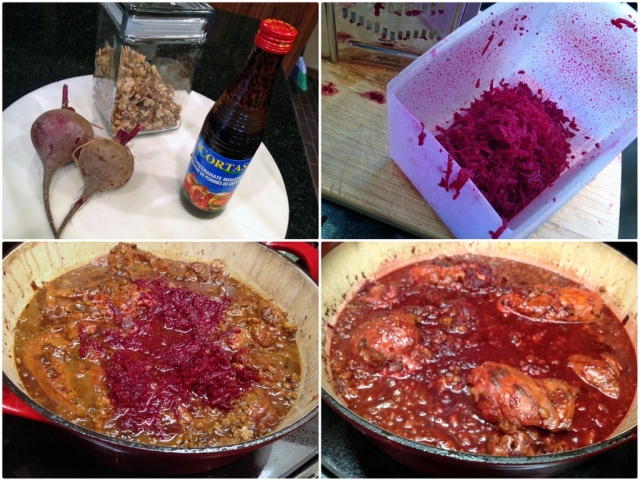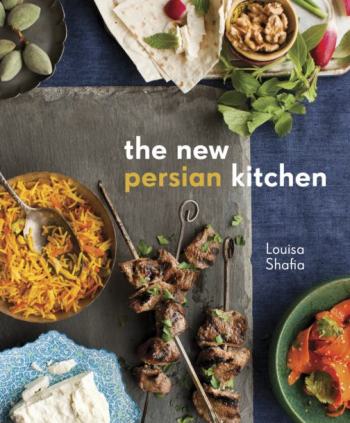 Many, many years ago, when I lived in California with my first husband, we would often go to a Persian restaurant located in Palo Alto. The food was simply outstanding, and the atmosphere perfect. A quiet place, beautifully decorated, and with a menu full of dishes that sounded magical to us, two Brazilians with no experience in that type of food. We would usually ask the waiter to pick something for us. One day he served us a braised lamb over rice with fava beans that completely awed our taste buds. I remember the fresh dill sprinkled all over it. And I also remember that I hated fava beans, but would gladly spend each day of my life enjoying that rice. Persian cooking can perform miracles. In those days, I had no way of knowing that the man I would marry many years later was also under the spell of Persian food. Phil had a friend from Iran who often invited him for dinner and prepared tahdig, best described as “rice with a crust”. Like my lamb dish with fava beans, that rice stayed forever in Phil’s memory as one of the best things he’s ever had! With all that in mind, when I read this review on Louisa Shafia’s book it took me 95 seconds to order it.
Many, many years ago, when I lived in California with my first husband, we would often go to a Persian restaurant located in Palo Alto. The food was simply outstanding, and the atmosphere perfect. A quiet place, beautifully decorated, and with a menu full of dishes that sounded magical to us, two Brazilians with no experience in that type of food. We would usually ask the waiter to pick something for us. One day he served us a braised lamb over rice with fava beans that completely awed our taste buds. I remember the fresh dill sprinkled all over it. And I also remember that I hated fava beans, but would gladly spend each day of my life enjoying that rice. Persian cooking can perform miracles. In those days, I had no way of knowing that the man I would marry many years later was also under the spell of Persian food. Phil had a friend from Iran who often invited him for dinner and prepared tahdig, best described as “rice with a crust”. Like my lamb dish with fava beans, that rice stayed forever in Phil’s memory as one of the best things he’s ever had! With all that in mind, when I read this review on Louisa Shafia’s book it took me 95 seconds to order it.
FESENJAN (WALNUT POMEGRANATE STEW)
(reprinted with permission from Louisa Shafia – The New Persian Kitchen)
1 tablespoon grapeseed oil
2 pounds skinless chicken legs or breasts
2 teaspoons salt, plus more, to taste
2 yellow onions, finely diced
1 cup walnuts, coarsely ground
½ cup pomegranate molasses
2 cups chicken stock, vegetable stock, or water
1 cup peeled and grated red beets
Pomegranate seeds and fresh mint leaves for garnish
.
Heat a large, deep skillet over medium-high heat and add oil. Lightly season chicken with salt and sear until well browned, 6-7 minutes per side, then transfer to a plate.
In the same skillet, sauté onions over medium heat for about 15 minutes, until lightly browned. Add walnuts, pomegranate molasses and 2 teaspoons salt. Stir to coat the onions. Add stock and bring to a boil. Reduce heat to a simmer and return chicken to stew. Cover and cook 25 minutes.
Stir in beets and cook, uncovered, until stew is thick and beets are tender, 15-20 minutes. Adjust salt to taste. Pull out chicken pieces with tongs and cut into halves or thirds, if you like. Put a few pieces of chicken on each plate, along with plenty of sauce. Garnish with pomegranate seeds and mint.
ENJOY!
to print the recipe, click here
 It was not easy to choose a recipe to highlight this great cookbook. You’d think I would pick either that magical lamb or a tahdig from our past, but I could not find fava beans, and tahdig is a bit intimidating for a first timer. Indeed, according to Louisa herself, tahdig is the type of dish that requires practice. Your first won’t be your best. So, I opted for this amazing chicken concoction. Once you make it, you’ll realize why it is usually reserved for special occasions. The intensity of flavors is hard to describe – it is sweet, sour, the walnuts give it body and texture, and the beets offer the most gorgeous color ever! Don’t even think about omitting the beets, by the way. First, you won’t detect their taste. Second, remember that Persian cooking perform miracles… 😉 I could not find fresh pomegranate seeds to sprinkle on top, but the dish was festive enough without it.
It was not easy to choose a recipe to highlight this great cookbook. You’d think I would pick either that magical lamb or a tahdig from our past, but I could not find fava beans, and tahdig is a bit intimidating for a first timer. Indeed, according to Louisa herself, tahdig is the type of dish that requires practice. Your first won’t be your best. So, I opted for this amazing chicken concoction. Once you make it, you’ll realize why it is usually reserved for special occasions. The intensity of flavors is hard to describe – it is sweet, sour, the walnuts give it body and texture, and the beets offer the most gorgeous color ever! Don’t even think about omitting the beets, by the way. First, you won’t detect their taste. Second, remember that Persian cooking perform miracles… 😉 I could not find fresh pomegranate seeds to sprinkle on top, but the dish was festive enough without it.
 To order, click here
To order, click here
A little review of Louisa Shafia’s book. Some cookbooks capture you from the moment you open the first page. I started reading it late at night, and could not put it down for a couple of hours. Louisa starts the book answering the simple question “What exactly is Persian food?” – and from there she takes the readers through a beautiful journey that covers not only its exotic flavors (sour cherries, rose petals, pomegranate molasses, dried limes, sumac, tamarind) but also the history of a fascinating region of the world and how it influenced the gastronomy of other places. You will learn a lot more than cooking through Louisa’s words. Even Persian poetry will be there for you…
Reading her book, I learned the correct way to deal with saffron (so now I am on a quest to find a small mortar made of brass ;-)), and also opened my horizons to using dried mint. Louisa states that dried mint in many instances is better than the fresh herb, and recommends searching for Egyptian mint. I followed her advice, and she is right, it delivers great flavor.
The book has 80 recipes, divided in courses. I will list a couple of recipes I found particularly tempting from each course just to give you an idea of what to expect.
Starters and Snacks: Winter Squash Fritters with Rose Petals & Turkish Roasted Tomato and Red Pepper Dip
Soups: Saffron Corn Soup & Oat and Mushroom Soup (her description of this soup made me dream…)
Salads: Shaved Celery Root and Pomegranate Salad & Vinegar Carrots with Toasted Sesame Seeds
Vegetable and Egg Entrees: Herb Frittata with Walnuts and Rose Petals & Sweet and Smoky Beet Burgers (click here for Louisa’s own blog post about it)
Meat and Fish Entrees: Grilled Shrimp with Lime Powder and Parsley-Olive Oil Sauce & Turmeric Chicken with Sumac and Lime (both of these dishes plus Fesenjan were my final contenders to cook for this post)
Main Dish Stews and Casseroles: Fesenjan (the featured recipe) & Persian Gulf-Style Spicy Tamarind Fish Stew
Rice and Grains: Jeweled Brown Basmati Rice and Quinoa (hard to resist this one…) & Rice with Favas and Dill (the rice of my past…) Several of her rice recipes can be turned into tahdig, and she does a great job advertising this spectacular take on rice.
Sweets: Rhubarb and Rose Water Sorbet with Rice Noodles (I simply HAVE to try this at some point) & Nutty Chocolate Bark with Cardamon and Coffee.
Beverages: Salty Mint Yogurt Soda & Watermelon, Mint, and Cider Vinegar Tonic
Pickles and Preserves: Fig Mustard (wow!) & Sour Cherry and Rose Preserves
You probably noticed that Louisa is one of those chefs who is in top shape, and that definitely influences her cooking style. She always offers variations that make a classic dish lighter and better for you. If you are particularly interested in cooking with whole grains and healthy oils and sweeteners, this book covers it all. Her chapter on ingredients closes with a wonderful list of grains and gluten-free flours and tips on how to cook with them. Can you tell I love her book?
Louisa, thank you for allowing me to publish a recipe from “The New Persian Kitchen”. I intend to cook a lot from it, and that includes tahdig… 😉
ONE YEAR AGO: Quinoa Salad with Roasted Beets
TWO YEARS AGO: Pasta Puttanesca
THREE YEARS AGO: Miche Point-a-Calliere

